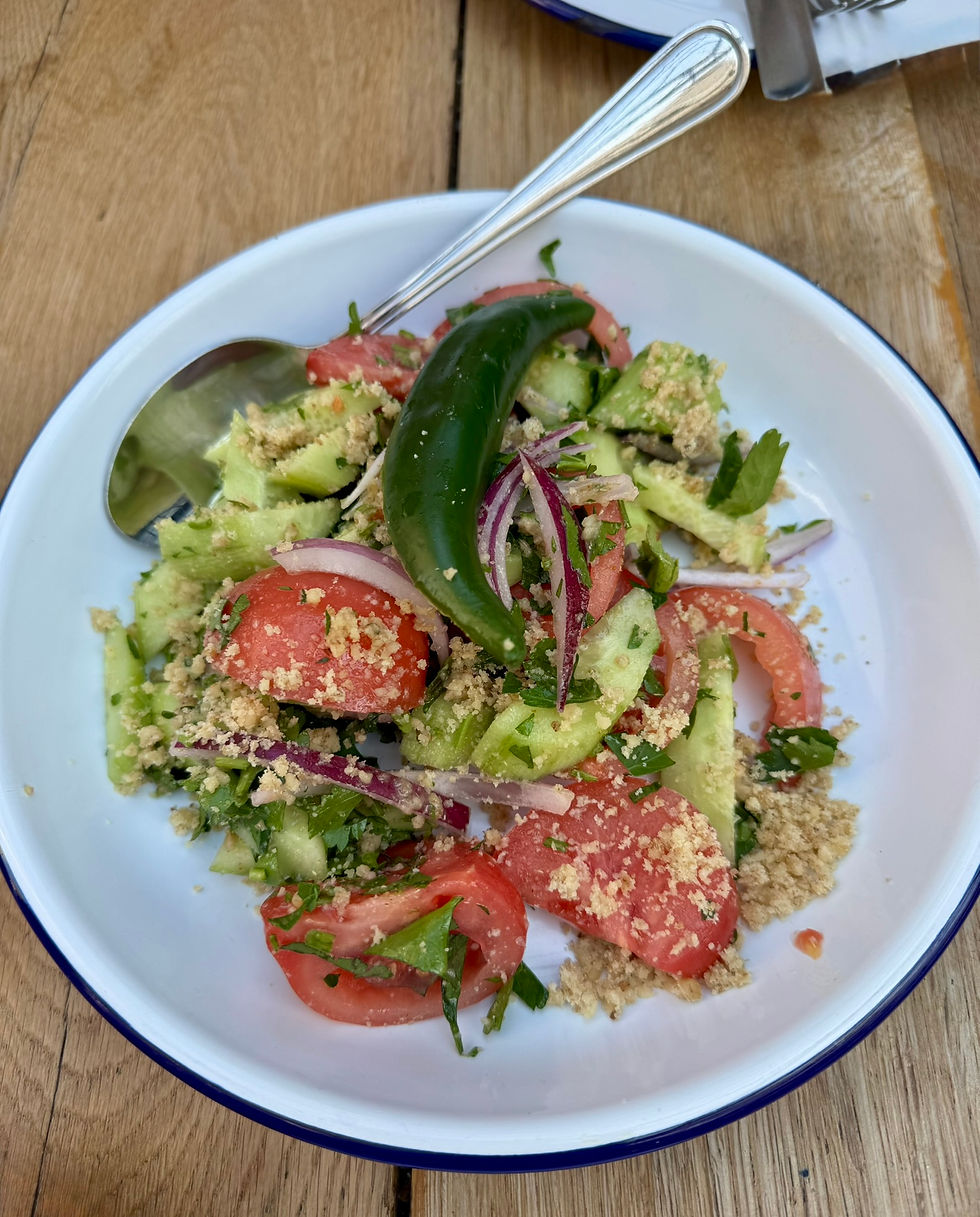Bon Appetite - Chapulines!
- worldculturebazaar
- May 17, 2021
- 2 min read

Chapulines. Photo by Rita Vaitau
Entomology, the eating of insects, has been known to humans for thousands of years. It is a cultural norm among roughly 80 percent of the world‘s nations on different parts of our planet: from the Americas, to Asia, to New Zealand, to Africa.
Chapuline, or grasshopper, derives from Nahuatl word chapolin and means "insect that jumps like a rubber ball."
In the western world, this eating habit is gaining popularity through some restaurants. For example, in London you can have a doughnut with grasshopper sprinkles, grasshoppers dipped in caramel or incorporated in a chocolate bar. I am eager to find out whether the introduction of chapulines during the home games of the Seattle Marines in 2017 continues today. Grasshoppers are found among Mexico‘s principal crops – beans, corn and squash. The best time to harvest insects is during the rainy season and at dawn, since at this cooler time the grasshoppers are less hyperactive and much easier to catch.
Plain chapulines are pretty bland. To me, the best word to describe the tasting experience would be "crunchiness". The flavor comes from the toppings: salt, garlic, chilli peppers, lime juice, sometimes even an extract of Maguey worms. Some say grasshoppers (seasoned) taste similar to salt and vinegar potato chips with a splash of wetness.
Although chapulines are popular in Guerrero, Morelos and Mexico City, Oaxaca is the region in Mexico where chapulines are most widely consumed. Oaxenos consume about 85 different insects, among them 15 different varieties of grasshoppers. It is a popular street food, a crunchy snack at bars with meszal or beer, ground with salt used to decorate margarita glass rims. In Oaxaca they are eaten in every imaginable form: as toppings on tlayudas (Oaxacan pizza), tacos, eggs, salsas, and even in ice cream.
The first bite of my friend Vilma
For many years, grasshoppers were the main source of protein for indigenous people. They consist of 63% of plain protein, out of which 80% is digestible.
The insects are not only richer in protein than beef, chicken, pork, fish, and milk, and provide more energy than wheat, but they also contain a high amount of vitamins A, B, and C, fiber, magnesium, calcium, zinc, and help to improve digestion.

Most unique flavors of ice cream (nieve) in Oaxaca: Leche quemada (burnt milk) con Tuna and Chapulines (prickly pear cactus sorbet with pieces of grosshoppers). Leche quemada was the most unusual flavor of ice cream I have ever had. It reminded me of the boiled milk at the kindergarten in my childhood. I satisfied my curiosity but was not so exited as the Oaxenos who recommended to try.
At the Plazuela de Soledad in Oaxaca there is a whole ice cream campus - nothing else just bunch of ice cream cafes. Since most of them offer a similar selection of flavors, you can make your choice based on the color of the chair coverings, for example :)















Comments